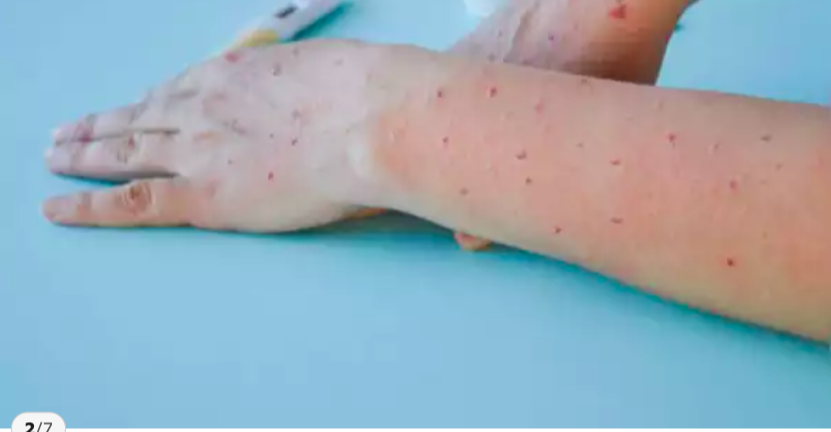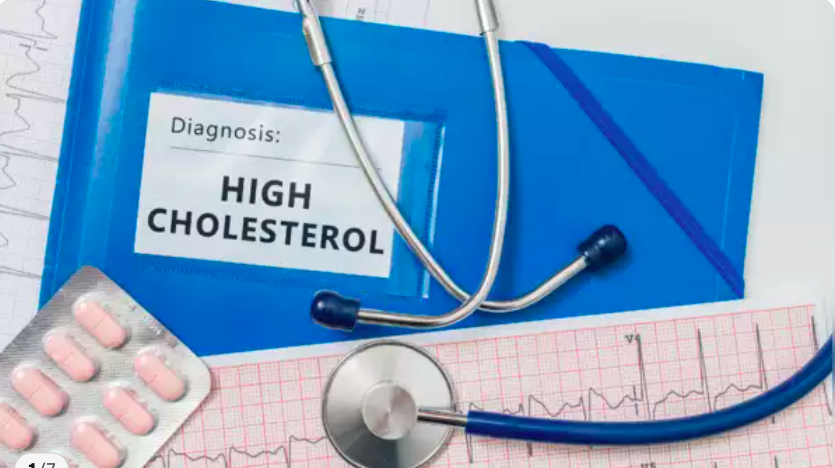Health
Can Malaria Fever Cause Sore Throat? Unraveling the Mystery

Can Malaria Fever Cause Sore Throat? Unraveling the Mystery
Malaria is a well-known tropical disease caused by the Plasmodium parasite transmitted through mosquito bites. It is typically associated with symptoms like fever, chills, and body aches.
However, some individuals have reported experiencing a sore throat in conjunction with malaria fever, leaving them puzzled about the connection between the two.
In this comprehensive article, we will delve into the relationship between malaria fever and sore throat, exploring the potential causes, symptoms, and treatment options. Let’s embark on a journey to unravel this intriguing medical mystery.
Understanding Malaria Fever
A Brief Overview of Malaria
Malaria is a life-threatening disease that affects millions of people worldwide, particularly in tropical and subtropical regions.
The parasite responsible for causing malaria is transmitted through the bites of infected female Anopheles mosquitoes.
Once inside the human body, the parasites multiply and eventually infect the red blood cells, leading to various symptoms, including fever.
The Link Between Malaria Fever and Sore Throat
Can Malaria Trigger Sore Throat?
While a sore throat is not a common symptom of malaria, there have been cases where individuals with malaria fever have also experienced a sore throat.
The exact link between the two conditions is not yet fully understood, but there are several possible explanations for this association.
- Inflammatory Response: Malaria triggers an inflammatory response in the body as the immune system fights the invading parasites. This immune response can sometimes extend to the throat, leading to inflammation and soreness.
- Secondary Infections: Malaria weakens the immune system, making individuals more susceptible to secondary infections. It is possible that a bacterial or viral infection causing a sore throat might take advantage of the weakened immune system during malaria infection.
- Drug Reactions: Certain medications used to treat malaria may have side effects, and one of them could be a sore throat. However, it’s important to note that not all malaria medications cause this reaction.
Symptoms of Malaria Fever and Sore Throat
Spotting the Telltale Signs
Malaria Fever Symptoms:
- High fever, often spiking and receding in cycles.
- Severe chills and shivering.
- Profound fatigue and weakness.
- Muscle aches and joint pain.
- Nausea and vomiting.
- Headaches.
Sore Throat Symptoms:
- Pain and irritation in the throat, especially when swallowing.
- Swollen tonsils or lymph nodes in the neck.
- Hoarseness or changes in the voice.
- Redness or white patches in the throat.
It’s important to remember that not everyone with malaria will experience a sore throat, and not all sore throats are related to malaria fever.
Diagnosing Malaria and Sore Throat
Seeking Proper Diagnosis
If you suspect you may have malaria, it is essential to seek medical attention promptly. A simple blood test can confirm the presence of malaria parasites in your bloodstream.
Similarly, if you experience a persistent sore throat alongside other symptoms, visit a healthcare professional for a thorough evaluation.
They will assess your medical history, conduct a physical examination, and may perform additional tests to determine the cause of your sore throat.
Treating Malaria Fever and Sore Throat
Effective Treatment Strategies
Malaria Treatment:
- The treatment for malaria usually involves antimalarial medications, which vary depending on the type of Plasmodium parasite causing the infection.
- Completing the full course of prescribed medication is crucial to ensure complete recovery and prevent drug resistance.
Sore Throat Treatment:
- Treatment for a sore throat caused by malaria or any other infection may include over-the-counter pain relievers, throat lozenges, and gargling with warm saltwater.
- If a bacterial infection is present, antibiotics may be necessary.
- Rest, hydration, and avoiding irritants like smoking can aid in recovery.
Preventing Malaria and Sore Throat
Staying Safe and Healthy
Preventing Malaria:
- Use mosquito nets while sleeping, especially in malaria-prone regions.
- Apply insect repellent to exposed skin.
- Wear long-sleeved clothing and pants when outdoors.
- Stay in air-conditioned or screened accommodations, if possible.
Preventing Sore Throat:
- Maintain good hand hygiene to reduce the spread of infections.
- Avoid close contact with individuals who have a sore throat or other respiratory infections.
- Ensure your vaccinations, including those for flu and strep throat, are up-to-date.
FAQs
-
Can malaria cause a sore throat in everyone infected?
- It is not a common symptom, and not all individuals with malaria will experience a sore throat.
-
Is a sore throat a sign of severe malaria?
- A sore throat alone is not an indication of severe malaria; other symptoms like high fever and weakness are more concerning.
-
Can over-the-counter medications treat malaria?
- No, malaria requires specific antimalarial medications prescribed by a healthcare professional.
-
Are there any natural remedies for malaria?
- While some traditional practices are believed to help alleviate symptoms, they should not replace proper medical treatment.
Can I get malaria from someone with a sore throat?
Malaria is not directly transmitted from person to person but rather through mosquito bites.
Can I travel to a malaria-prone area if I’ve had a sore throat recently?
It is advisable to seek medical advice before traveling to such regions, especially if you’ve had recent health issues.
Can sore throat symptoms be managed at home?
Mild sore throat symptoms can often be managed at home with rest, hydration, and over-the-counter remedies.
Is there a vaccine for malaria?
While efforts to develop a malaria vaccine are ongoing, no fully effective vaccine is currently available.
Can sore throat lead to malaria infection?
- No, sore throat itself does not lead to malaria; the infection is caused by the Plasmodium parasite transmitted by mosquitoes.
How long does it take for malaria fever to resolve?
The duration of malaria fever varies, but with proper treatment, it usually resolves within a few days to a couple of weeks.
Conclusion
While sore throat is not a typical symptom of malaria fever, there have been instances where the two conditions coexist.
The link between the two remains somewhat enigmatic, possibly attributed to inflammatory responses, secondary infections, or drug reactions. Prompt and accurate diagnosis is crucial in managing both malaria and sore throat.
By understanding the symptoms, seeking medical attention, and taking preventive measures, individuals can protect themselves from these health challenges.
Health
6 Daily Habits to Naturally Lower Cholesterol Levels
Health
Understanding the Rapid Spread of Monkeypox’s New Strain Clade 1b

Understanding the Rapid Spread of Monkeypox’s New Strain Clade 1b: Key Facts on Transmission, Symptoms, Severity, and Vaccination
Monkeypox, a viral disease with symptoms resembling smallpox, has recently gained attention due to the emergence of a newstrain, Clade 1b.
This article delves into the essential details about this new variant, including how it spreads, its symptoms, its severity, and the current state of vaccinations.
Our goal is to provide a comprehensive and clear understanding of this evolving situation, enabling readers to stay informed and prepared.
Monkeypox, once a rare and somewhat obscure disease, has recently become a significant public health concern due to the emergence of new strains.
Among these, Clade 1b has been noted for its rapid spread and distinct characteristics.
As we navigate through the complexities of this variant, it is crucial to grasp the fundamentals of its transmission, symptoms, severity, and preventive measures, including vaccination.
Understanding Monkeypox Clade 1b
What is Monkeypox?
Monkeypox is a zoonotic virus belonging to the Orthopoxvirus genus, which also includes smallpox.
First identified in monkeys, it can infect humans through close contact with infected animals or individuals.
While it shares similarities with smallpox, monkeypox tends to be less severe and less transmissible.
Clade 1b Overview
Monkeypox has several clades (strains), with Clade 1b being the most recent and notable for its rapid spread.
This strain has shown increased transmissibility compared to previous clades, raising concerns among public health officials.
Transmission of Clade 1b
Modes of Transmission
Clade 1b spreads primarily through:
- Direct Contact: Contact with bodily fluids, skin lesions, or contaminated surfaces of an infected person.
- Respiratory Droplets: Prolonged face-to-face interaction can lead to transmission through respiratory droplets.
- Animal Contact: Infected animals, particularly rodents and primates, can transmit the virus to humans.
Environmental Factors
Transmission rates can also be influenced by environmental factors such as:
- Crowded Living Conditions: Higher transmission rates are observed in densely populated areas.
- Sanitation Practices: Poor hygiene and sanitation can facilitate the spread of the virus.
Symptoms of Monkeypox Clade 1b
Early Symptoms
The symptoms of Clade 1b may resemble those of other viral infections, making initial diagnosis challenging.
Early symptoms include:
- Fever: A sudden onset of high temperature.
- Headache: Severe headaches that can persist for days.
- Muscle Aches: Generalized muscle pain and discomfort.
- Fatigue: Extreme tiredness and weakness.
Rash and Skin Lesions
A defining feature of monkeypox is the rash, which typically progresses through several stages:
- Macules: Flat, discolored spots on the skin.
- Papules: Raised bumps.
- Vesicles: Fluid-filled blisters.
- Pustules: Pus-filled lesions that eventually crust over.
Severe Symptoms
In more severe cases, symptoms may include:
- Encephalitis: Inflammation of the brain, leading to neurological symptoms.
- Pneumonia: Infection of the lungs that can cause difficulty breathing.
- Secondary Infections: Bacterial infections that may complicate the healing process.
Severity of Clade 1b
General Outlook
Clade 1b has been associated with a higher transmission rate and more severe outcomes compared to other strains. However, the overall severity can vary widely among individuals.
Factors influencing severity include:
- Immune System Status: Individuals with weakened immune systems or pre-existing conditions may experience more severe symptoms.
- Age: Young children and elderly individuals are at higher risk of severe illness.
- Timeliness of Medical Care: Early medical intervention can significantly affect the outcome.
Mortality Rates
The mortality rate for Clade 1b is currently under study, but initial data suggest it may be higher than previous strains. Prompt medical attention and supportive care are crucial in reducing the risk of severe outcomes.
Vaccination and Prevention
Current Vaccines
Vaccination is a key strategy in controlling the spread of monkeypox.
The following vaccines are relevant:
- Smallpox Vaccine: The smallpox vaccine is effective against monkeypox due to the similarities between the viruses. It provides protection for those who have been recently vaccinated or who received it in the past.
- Monkeypox-Specific Vaccine: Research is ongoing into vaccines specifically targeting monkeypox, with several candidates showing promise in trials.
Vaccination Recommendations
Public health authorities recommend vaccination for:
- Healthcare Workers: Individuals who are at higher risk due to their profession.
- High-Risk Populations: People in areas experiencing outbreaks or those with frequent exposure to infected individuals.
Preventive Measures
In addition to vaccination, preventive measures include:
- Good Hygiene: Regular handwashing and use of hand sanitizers.
- Avoiding Contact: Minimizing close contact with individuals displaying symptoms or with infected animals.
- Isolation: Infected individuals should isolate themselves to prevent the spread of the virus.
Conclusion
The emergence of Monkeypox Clade 1b represents a significant challenge to global health. Its increased transmissibility and potential for severe outcomes highlight the importance of staying informed and proactive.
By understanding its transmission, symptoms, and preventive measures, individuals and communities can better protect themselves and mitigate the impact of this new strain.
FAQs
1. What makes Clade 1b different from other monkeypox strains?
Clade 1b is noted for its increased transmissibility and potentially more severe outcomes compared to other strains.
It spreads faster and may lead to more serious health issues, necessitating closer monitoring and enhanced preventive measures.
2. How can I tell if I have monkeypox or another viral infection?
Monkeypox often begins with flu-like symptoms and progresses to a distinct rash.
If you experience these symptoms, especially if you’ve been in contact with someone who has monkeypox or are in an outbreak area, seek medical advice for accurate diagnosis and testing.
3. Is the smallpox vaccine effective against Monkeypox Clade 1b?
Yes, the smallpox vaccine offers protection against monkeypox, including Clade 1b, due to the similarities between the two viruses.
However, its effectiveness may vary based on factors such as time since vaccination and individual health conditions.
4. Are there any new vaccines specifically for monkeypox?
Research is ongoing to develop and approve vaccines specifically targeting monkeypox.
Several candidates are in various stages of clinical trials, with some showing promising results in enhancing protection against monkeypox strains, including Clade 1b.
5. What should I do if I suspect I have monkeypox?
If you suspect you have monkeypox, contact a healthcare provider immediately. They can guide you through testing, diagnosis, and appropriate care.
In the meantime, practice good hygiene and avoid close contact with others to prevent spreading the virus.
References:
Health
Understanding the Low Risk of Mpox Outbreak in India and Our Preparedness Measures

-

 Trending Stories1 year ago
Trending Stories1 year agoCDC: 1 in 4 Americans Still COVID-Free by End of 2022
-

 Health5 years ago
Health5 years agoMeghan Trainor Shares Motivational New Song ‘Blink’
-

 Health2 years ago
Health2 years agoHow Long Does Monkey Pox Last Before It Surfaces in the Body?
-

 Health2 years ago
Health2 years agoWhat Causes Swollen Body? Understanding Edema and its Triggers
-

 Health4 months ago
Health4 months agoHow Do Pawpaw Seeds Support Cardiovascular Health?
-

 Health3 years ago
Health3 years agoNutrition and the Importance of a Fitness Program – 3 Things to Know
-

 Health3 years ago
Health3 years ago5 Weird Reasons Why Pimples Disappear After Marriage
-

 Health2 years ago
Health2 years agoHealth Benefits Of Pawpaw Seed? 7 Things To Know






